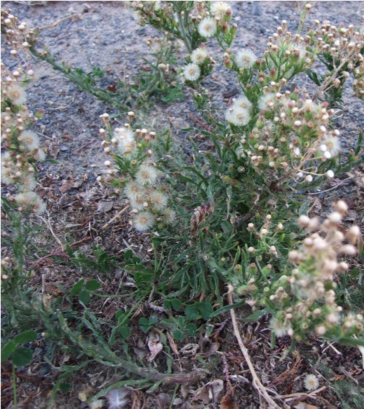Weed of Focus for March – Fleabane (Conyza species)
What is it?
Fleabane belongs to a large genus (group of species) called Conya.
What does fleabane look like?
Originating in America, Fleabane is an upright annual herb with a single stem up to 1 to 2m high. Found on disturbed sites, headlands, dunes and edge of bushland.
This plant starts off with a tuft of basal leaves, then develops an erect stem to 2m tall. The stem terminates in elongated seed heads with tiny dandelion-type flyaway seeds. Flowers are white to pink, flowering in summer. Seeds are small with fine white hairs. The seed is wind dispersed.
Why is a problem?
Eight fleabane populations are confirmed resistant to glyphosate in northern NSW and southern Queensland and the weed is now severely infesting cropping lands, roadsides and other non-agricultural areas.
Fleabane can produce in excess of 100,000 seeds per plant, allowing it to rapidly colonise bare ground. The seeds spread rapidly on the wind and a small percentage of survivors is enough to maintain high seedbank levels in following years. Stopping seedset is of paramount importance, but unfortunately, many mature plants are left unchecked in summer and continue to produce seed.
Fleabane will not uses valuable soil moisture, but it also robs the soil of valuable nutrients, and in trials has caused up to 60% reduced yield in subsequent crops.
What do I do when I find fleabane at Narara Ecovillage?
Maintaining control of fleabane is an ongoing process. Manual control involves:
- Bagging and binning seed heads and any well-developed buds, as these can continue to develop into seeds if left on the ground.
- Pulling up rest of plant and shake soil off roots, and leave in a dry place.
- Pulling out smaller plants. Seedlings are easier to control, so it is best to remove them when the plants are small and actively growing.
References
http://www.confarming.org.au/LiteratureRetrieve.aspx?ID=106632



